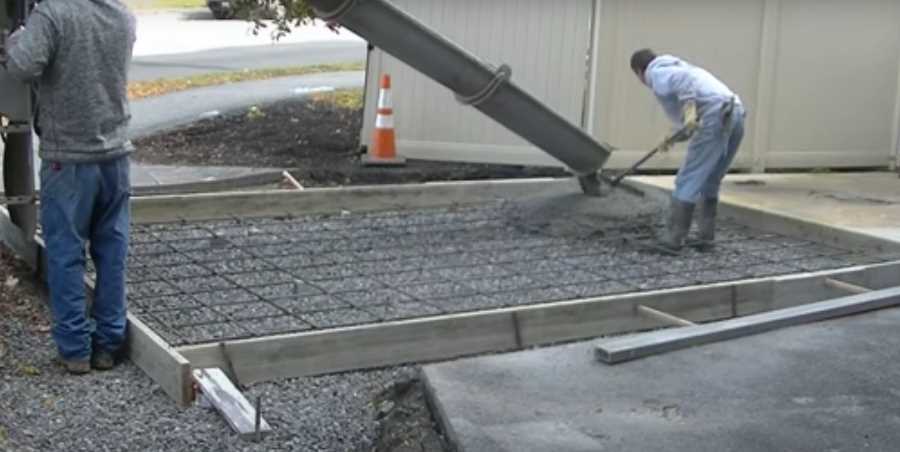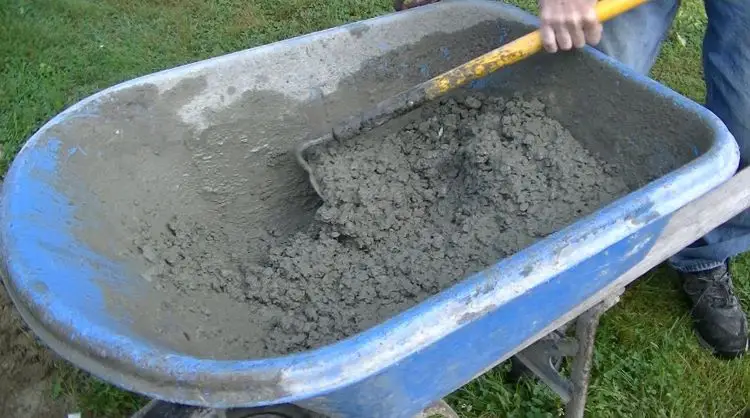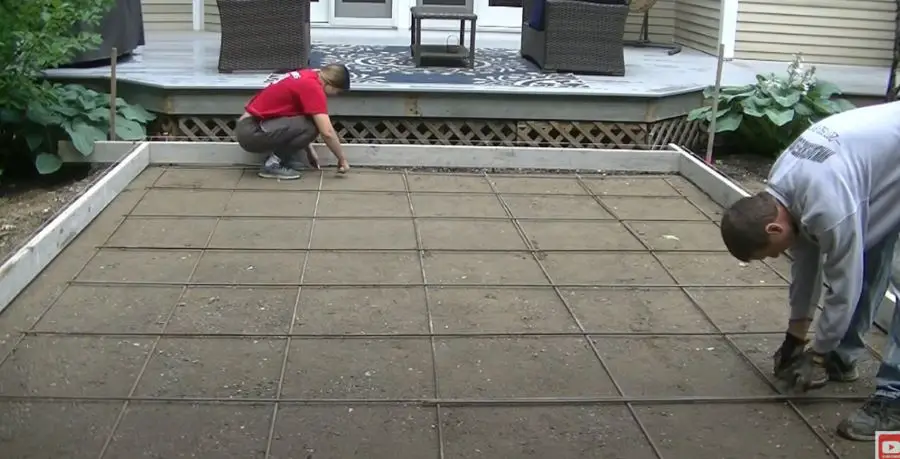Concrete Truck Capacities: How Many Yards Does a concrete truck Hold?
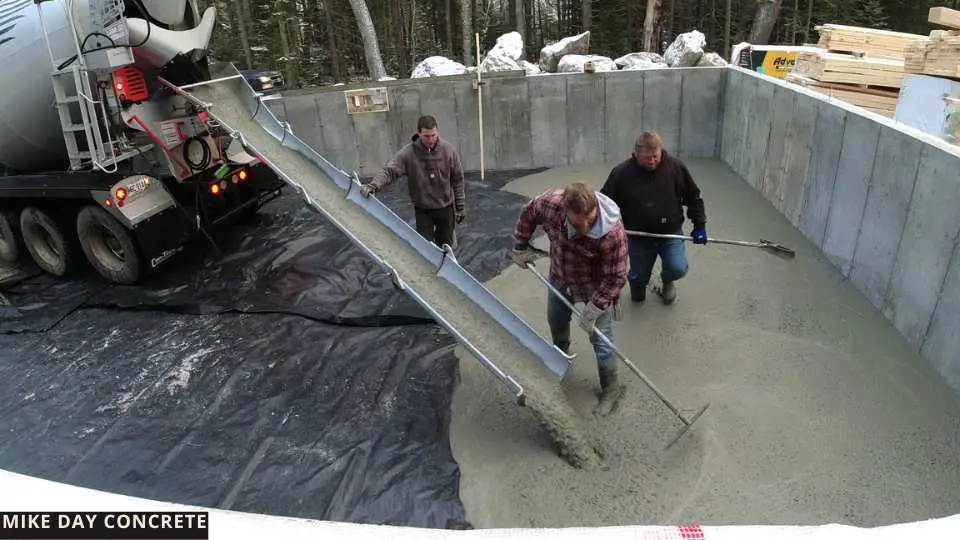
Concrete is a versatile material that is used in a wide variety of construction projects. When you need a large quantity of concrete, you will need to hire a concrete truck to deliver it. But how much concrete can a full concrete truck hold?
The answer depends on the size of the truck. The smallest concrete trucks hold about 2 cubic yards of concrete, while the largest, fully loaded concrete truck can hold up to 14 cubic yards. However, the average ready-mix truck holds about 10 cubic yards of concrete.
The state's regulations also affect the capacity of a concrete truck. Some states have road weight restrictions on trucks, meaning most concrete trucks with a larger capacity may not be allowed to travel on public roads.
How much concrete does a typical concrete truck hold:
front discharge concrete truck:
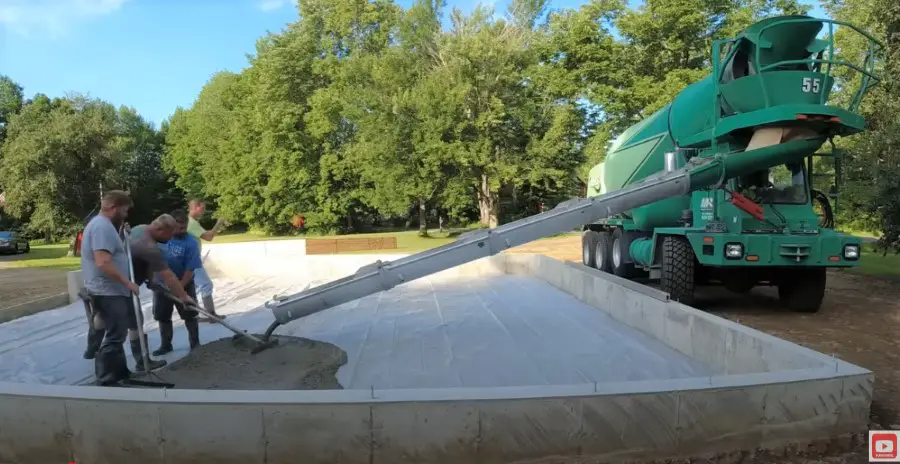
These larger concrete trucks usually have capacities ranging from 10 to 12 cubic yards, similar to rear discharge trucks. The key difference is the location of the discharge point which can offer certain advantages in specific situations.
rear discharge concrete truck:
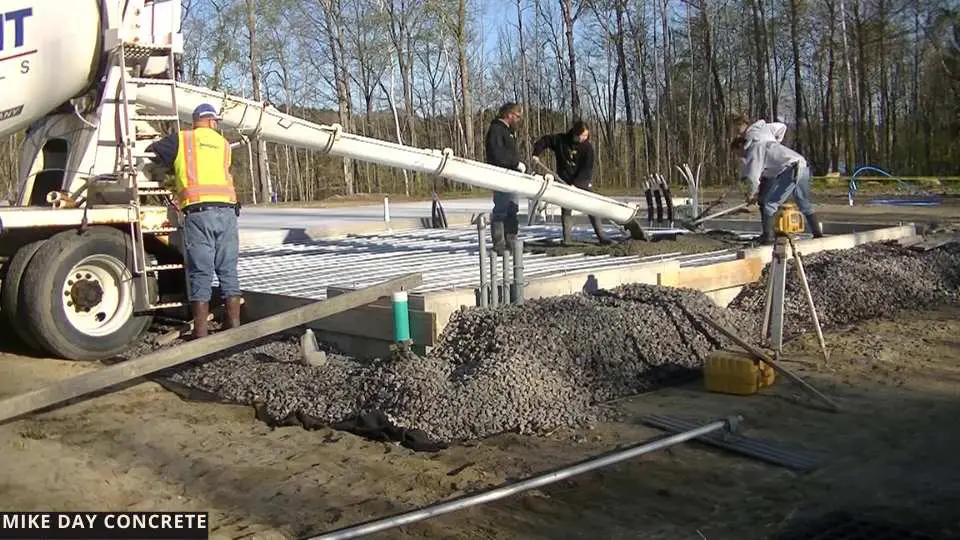
This is the most common type of concrete truck, often referred to as a standard concrete truck. A full truck will typically hold between 8 to 11 cubic yards of concrete. I personally use this type of concrete truck for my residential projects.
mini concrete truck:
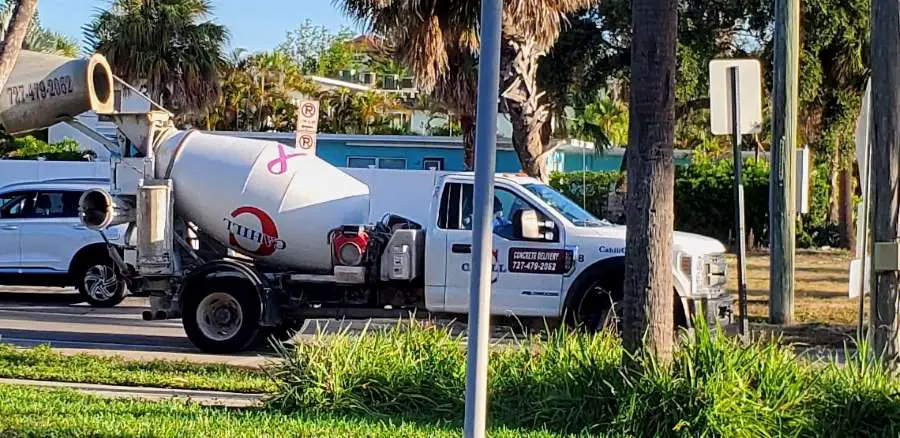
A mini or compact concrete truck is smaller and lighter, designed for smaller jobs or hard-to-reach places. These mini concrete trucks can typically carry about 2 to 3 cubic yards of concrete.
conveyor concrete truck:
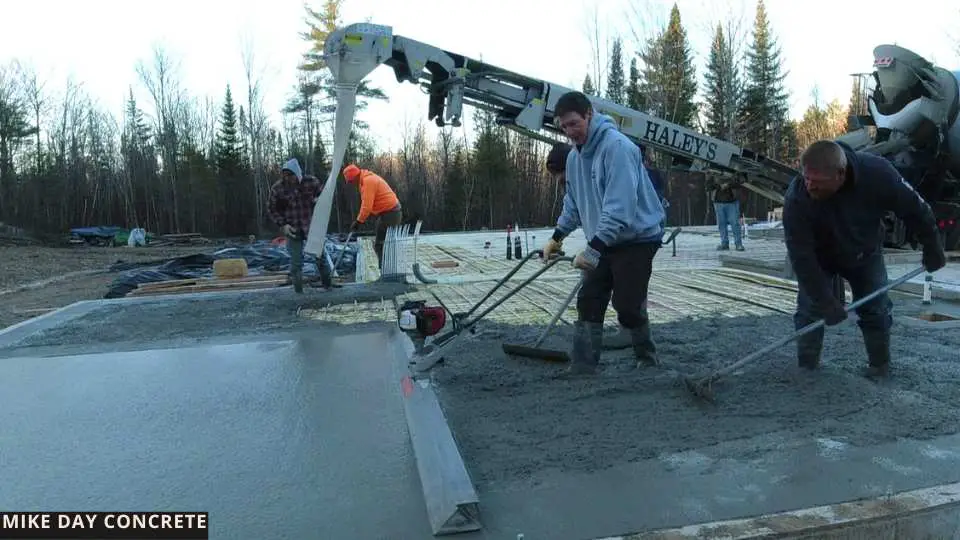
A conveyor concrete mixer truck has a conveyor belt attached that provides more reach than the concrete chutes. Concrete contractors love these trucks because they're much less expensive than a pump truck but still provide you with about 40' of reach. They usually hold up to 9.5 cubic yards of ready-mix concrete.
duel axle concrete truck:
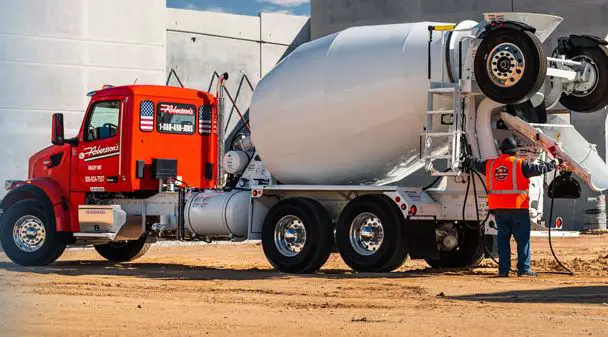
Dual axle ready mix trucks are larger and capable of carrying more weight. The average dual-axle concrete truck can hold between 8 to 11 cubic yards of concrete.
volumetric concrete truck:
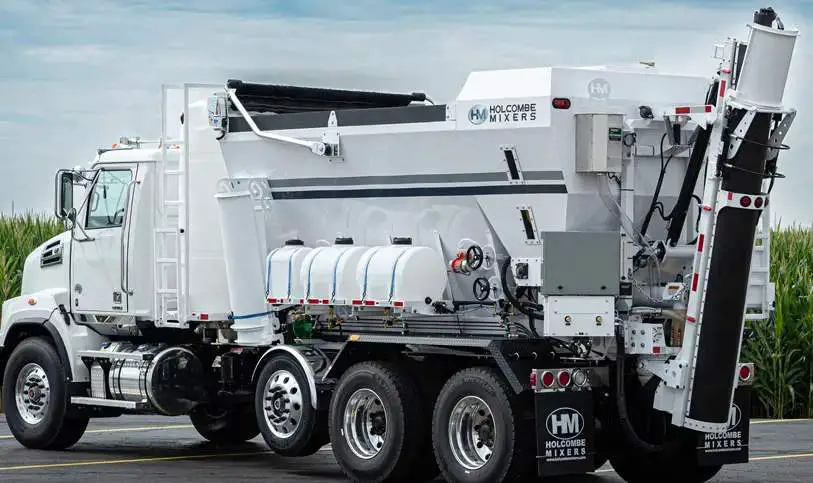
These trucks are unique because the concrete is mixed on-site by the truck, allowing the mix to be adjusted as needed. They can typically hold up to 12 cubic yards of concrete, but this can vary based on the exact model and configuration of the truck.
semi-trailer concrete truck:
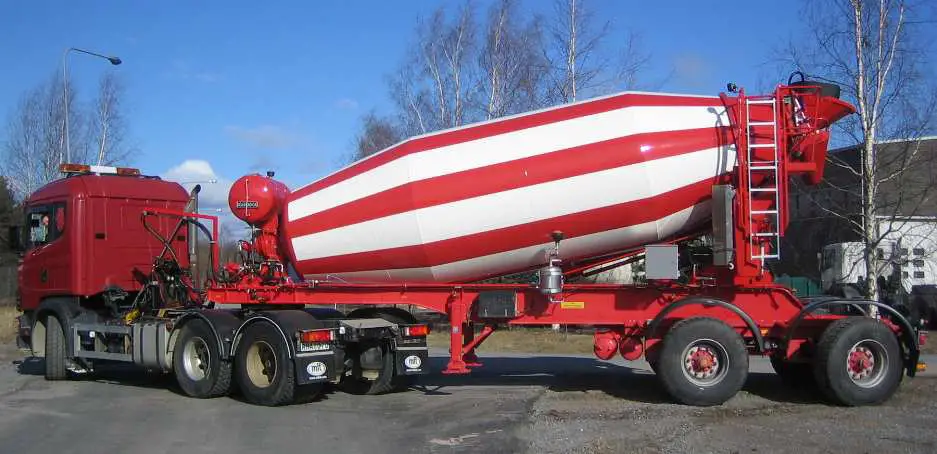
These trucks, while not as common, can hold substantial quantities of concrete due to their larger size. The fully loaded truck capacity can range from 10 up to 14 cubic yards or more, but their size also limits their maneuverability in tight spaces and the locations they can deliver to.
How to calculate how many cubic yards of concrete you need
A cubic yard of concrete is a volume measurement often used in the United States and other countries that don't primarily use the metric system. It measures 3 feet long by 3 feet wide by 3 feet high, which equals 27 cubic feet.
If you are trying to determine how much concrete you need for a concrete project or at a job site, you can use the following steps:
- Measure the Area: Measure the length, width, and thickness (or height) of the area you plan to pour concrete. These measurements should be in feet if you're trying to calculate cubic yards.
- Convert All Measurements to Feet: If any of your measurements aren't in feet, make sure to convert them. For example, if the thickness is given in inches, divide it by 12 to get the equivalent in feet.
- Calculate Volume in Cubic Feet: Multiply your length, width, and thickness measurements together to get the volume in cubic feet.
- Convert Cubic Feet to Cubic Yards: Since there are 27 cubic feet in a cubic yard, you'll need to divide your cubic feet measurement by 27 to convert it to cubic yards.
Example: If you have a concrete slab that is 10 feet long, 10 feet wide, and 4 inches thick, you would calculate the volume as follows:
Length (ft) x Width (ft) x Thickness (ft) = Volume (cubic feet) 10 x 10 x (4/12) = 33.33 cubic feet
Then, convert this volume to cubic yards: 33.33 cubic feet ÷ 27 = 1.23 cubic yards of concrete
You would need approximately 1.23 cubic yards of concrete for this size concrete slab.
You can also figure out how many yards of concrete you need using my concrete calculator.
Remember, it's often wise to order a little bit more concrete than your calculations suggest, in case of errors or uneven ground. A common rule of thumb is to order 10-15% more than your initial calculation. In this case, you might order 1.5 cubic yards of concrete to be safe.
You can also use this concrete calculator to figure concrete yardage.
How to order ready mix concrete for your concrete delivery
Ordering ready-mix concrete is relatively straightforward, but it does require some planning and careful calculation. Here's a general step-by-step guide:
- Calculate how much concrete is needed: As discussed earlier, calculate the volume of concrete you need in cubic yards by measuring the length, width, and depth of the area to be filled and then convert that volume to cubic yards. Always add 10-15% extra to cover any uncertainties or irregularities in the area.
- Determine the Right Mix: Concrete comes in various mixes, which have different proportions of cement, aggregate (like sand and gravel), and water. The right concrete mix for your project depends on its intended use. For example, a driveway may require a different mix than a foundation or a sidewalk. If you're not sure, your supplier can often recommend the right mix based on your project.
- Contact local Concrete Companies: Search for local ready-mix concrete delivery companies. When you contact them, tell them about your concrete pour and the volume and mix of concrete you need. They should be able to provide a quote on concrete costs.
- Schedule a Delivery: Arrange a concrete delivery time with the supplier. Keep in mind that you'll need to have your site prepared before the concrete arrives, and you'll need to unload the concrete promptly after it's delivered to prevent it from starting to set.
- Prepare for the Delivery: Make sure the site is ready and that there's a clear path for the concrete truck to get to the site. You'll also need to have any necessary tools on hand, and if you're doing the work yourself, you may need to arrange for helpers to be there.
- Pour and Finish the Concrete: Once the concrete is delivered, it needs to be poured, leveled and finished. If you're not experienced with this, you may want to hire a concrete contractor.
Remember, it's always better to have a little too much concrete than not enough because if you run out in the middle of a pour, it can create a lot of problems.
How much does a cubic yard of concrete cost?
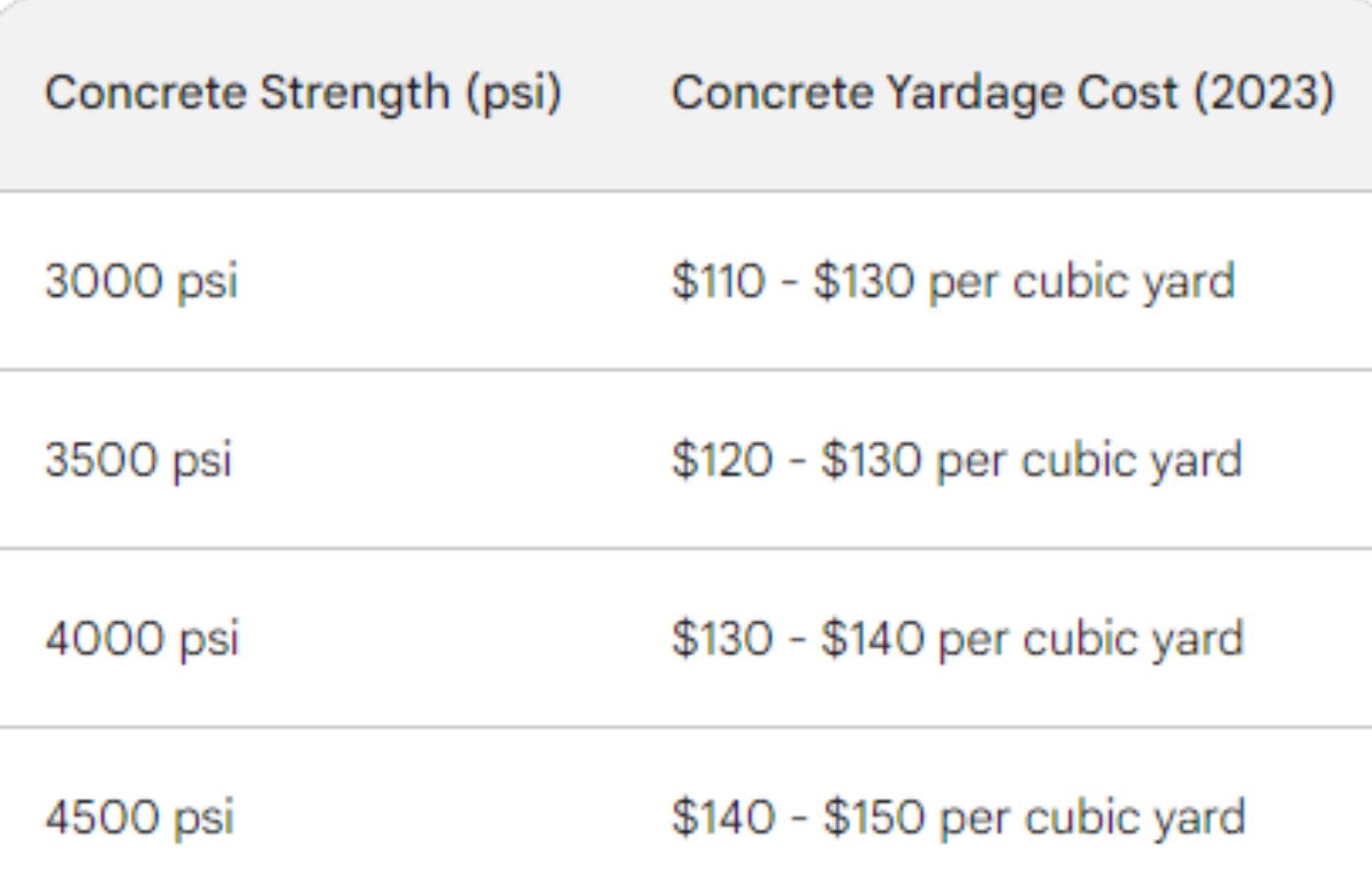
Please note that these are just estimates and the actual cost of concrete may vary depending on the specific location, the type of concrete, and the delivery distance.
Here are some factors that can affect the cost of concrete:
the type of concrete
The cost of concrete will vary depending on the concrete mix design. For example, concrete with higher strength will typically cost more than concrete with lower strength.
the delivery distance
The cost of concrete will also vary depending on the delivery distance. Concrete that has to be transported over long distances will typically cost more than concrete that can be delivered locally.
the season
The cost of concrete can also vary depending on the season. Concrete is typically more expensive during the winter months when warm water and accelerators are used in the mix.
If you are planning a concrete project, it is important to get quotes from multiple suppliers to get the best concrete price per cubic yard for your concrete delivery.
Are concrete trucks the same as cement trucks?
The terms "concrete truck" and "cement truck" are often used interchangeably, but technically, they refer to two different things.
A cement truck would theoretically be a vehicle carrying loads of cement, a dry powdered substance made by burning limestone and clay that's used as a binding agent in concrete.
On the other hand, a concrete truck, more accurately known as a concrete mixer truck, carries concrete - a mixture of cement, aggregate (such as sand and gravel), and water. These trucks have large rotating drums that keep the concrete from hardening during transport.
In everyday language, however, when people refer to "cement trucks," they're usually talking about a concrete ready-mix truck. This is a common mistake because, while cement is a key component of concrete, it's only one part of the mix.
How much does a cubic yard of concrete weigh?
The weight of a cubic yard of concrete can vary based on the precise mix of the concrete, but a general average weight is approximately 4,000 pounds, or 2 tons, per cubic yard.
This figure is an average for standard mixed concrete, which is typically made up of 10-15% cement, 60-75% aggregates (like sand and gravel), and 15-20% water. However, different mixes can have different weights.
For example, "lightweight" concrete mixes often use lighter aggregate materials and can weigh significantly less, while "heavyweight" concrete mixes can use heavier aggregates and can weigh more.
Therefore, while 4,000 pounds per cubic yard is a good general estimate, the actual weight can be more or less depending on the specific concrete mix used. Always check with your concrete company for the most accurate information.
How much do empty concrete trucks weigh?
The weight of an empty concrete truck can vary significantly based on its size, type, and materials used in its construction. Here are some general weight ranges for different types of concrete trucks:
- Standard Concrete Mixer Truck (Rear or Front Discharge): The empty weight of a standard concrete mixer truck typically falls between 36,000 to 43,000 pounds, although it can vary based on the size of the truck.
- Mini Mixer Truck: A mini mixer truck, designed for smaller jobs, can have an empty weight range of around 9,000 to 15,000 pounds.
- Single Axle Concrete Truck: These smaller, more maneuverable trucks usually weigh in the range of 26,000 to 38,000 pounds when empty.
- Dual Axle Concrete Truck: Larger than single axle trucks, dual axle concrete trucks typically have an empty weight of around 35,000 to 48,000 pounds.
- Volumetric Concrete Mixer Truck: These trucks, which mix the concrete on site, can have an empty weight of around 35,000 to 45,000 pounds.
- Semi-Trailer Concrete Truck: These are large trucks that are not as common but can hold larger quantities of concrete. Their empty weight can be around 40,000 to 55,000 pounds.
These are approximate weights and the actual weight can vary based on the specific model of the truck, the manufacturer, and the materials used in the truck's construction. Always refer to the manufacturer's specifications for the most accurate information.
How much does concrete weigh per square foot?
The weight of concrete per square foot depends on the thickness of the concrete slab. Since concrete is typically measured in cubic yards, you would need to know the volume (length x width x height) to calculate the weight.
As a guideline, a standard mix of concrete has an approximate weight of 150 pounds per cubic foot.
Here's an example:
- For a 4-inch thick concrete slab (which is 1/3 of a foot), one square foot of concrete would weigh approximately 50 pounds (150 pounds/cubic foot x 0.33 feet = 49.5 pounds, rounded to 50 for simplicity).
- For a 6-inch thick slab (which is 0.5 of a foot), one square foot of concrete would weigh approximately 75 pounds (150 pounds/cubic foot x 0.5 feet = 75 pounds).
These estimates are based on the average weight of concrete (150 pounds per cubic foot) and may vary depending on the specific ready-mixed concrete used.
Should you hire a professional concrete contractor or do it yourself?
Determining whether to hire a professional concrete contractor or do the job yourself depends on a few factors:
- The complexity of the Job: If the project is complex, such as installing a concrete driveway with a specific finish or creating a foundation for a new house, it's best to hire a professional. They have the experience and tools necessary to ensure the job is done right.
- Size of the Job: Small jobs like filling a small hole or setting a few posts might be manageable as DIY projects. However, larger projects, like creating a patio or pouring a large slab, could be better left to professionals due to the scale and potential for errors.
- Experience Level: If you've worked with concrete before and feel comfortable with the process, doing it yourself could save you money. However, if you've never mixed or poured concrete, it might be best to hire a professional. Concrete can be challenging to work with, and mistakes can be difficult and costly to fix.
- Time Availability: Concrete work can be time-consuming. It's not just about pouring the concrete but also preparing the site, setting up the forms, applying the finish, and then waiting for it to cure. If you're short on time, hiring professional concrete contractors could be a better choice.
- Cost Considerations: While doing it yourself can sometimes be cheaper, that's not always the case, especially if you make mistakes that need to be fixed or if you need to buy or rent specialized equipment. Be sure to factor in all the potential costs, not just the concrete cost.
- Safety: Working with concrete can be physically demanding and may pose risks if not done correctly. Concrete contractors have the right training and equipment to do the job safely.
In conclusion, while DIY might be tempting for small, simple projects, hiring a professional can save time, ensure a high-quality finish, and possibly even save money in the long run for larger, more complex projects.
If you desire to do your own concrete and want some concrete training, check out The Concrete Underground for all my concrete training videos.
These are the top 8 reasons why it's important for you to know how many yards does a concrete truck hold
Here are the top 8 reasons why it is important to know how many yards a concrete mixer truck can hold:
- To determine how many trucks you need to order. If you know how much concrete you need, you can divide that number by the capacity of the truck to determine how many trucks you need to order.
- To avoid overpaying for concrete. If you order too many trucks, you will be wasting money. If you order too few trucks, you will have to wait for another truck to arrive, which can delay your project.
- To ensure that the concrete arrives on time. If you know how many trucks you need, you can schedule the delivery accordingly. This will help to ensure that the concrete arrives on time and that your project is not delayed.
- To plan the logistics of the delivery. You will need to know how many trucks are coming and when they will arrive in order to plan the logistics of the delivery. This includes making sure that there is enough space for the trucks to park and that there are people available to unload the concrete.
- To ensure that the concrete is properly mixed. The concrete in a truck needs to be mixed properly in order to achieve the desired consistency. If the truck is too full, the concrete may not be mixed properly.
- To comply with state regulations. Some states have weight limits on roads and bridges. If you know how many yards a truck can hold, you can ensure that you are complying with these regulations.
- To estimate the cost of the project. The cost of concrete per cubic yard is based on the amount of concrete that is used. If you know how many yards of concrete you need, you can estimate the final cost of the project.
- To make sure you get your concrete delivered on time and within budget. By knowing how many yards a truck can hold, you can ensure that the concrete is delivered on time and within budget.
